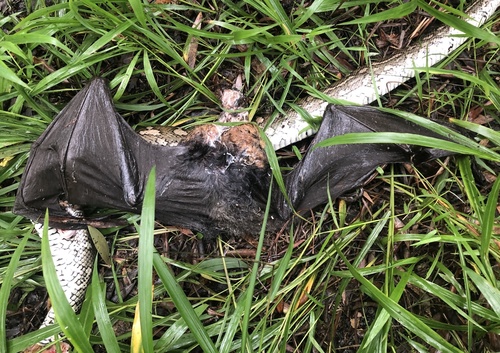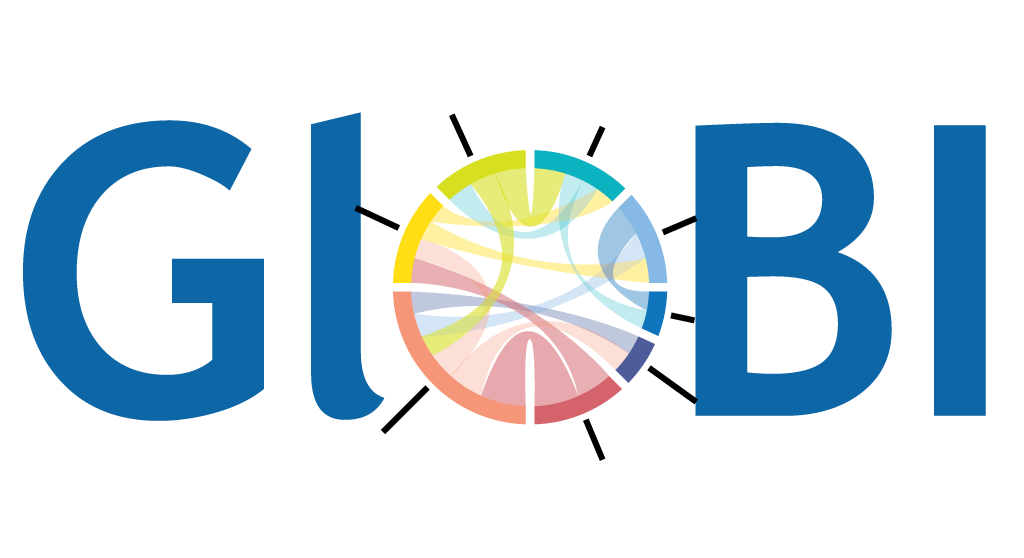Field Museum and iNaturalist Adopt Darwin Core Resource Relationship Standard to Share Species Interaction Records
Life on earth is sustained by a complex interplay between organisms and their environment. Global Biotic Interactions (GloBI) helps to make records of these interactions easier to find by tracking and indexing digital datasets containing descriptions of how organisms interact. TDWG’s Darwin Core has long been used to exchange information about where organisms are seen. Recently, the Field Museum and iNaturalist switched to using the Darwin Core Resource Relationship extension to share how organisms interact.
The Field Museum holds millions of preserved specimens in their natural history collections. Some of these specimens are parasites that were found on their host. For instance, the Field Museum Insect Collection contains a preserved specimen of an adult male flea Trichopsylloides oregonensis Ewing, 1938 FMNH FMNHINS 0004 345 536 collected on 17 April 1971 by C. O. Maser in Tillamook, Oregon, USA at the Cascade Head Experimental Forest. And, according to their records this flea was found on a mountain beaver (Aplodontia rufa (Rafinesque, 1817) ).
| Primary Taxon | Interaction Type | Associated Taxon | Count |
|---|---|---|---|
| Trichobius joblingi Wenzel, 1966 | ectoparasite of | Seba's short-tailed bat (Carollia perspicillata) | 1377 |
| Megistopoda proxima (Séguy, 1926) | ectoparasite of | Little yellow-shouldered bat (Sturnira lilium) | 906 |
| Megistopoda aranea (Coquillétt, 1899) | ectoparasite of | Jamaican fruit bat (Artibeus jamaicensis) | 793 |
| Trichobius parasiticus Gervais, 1844 | ectoparasite of | Common vampire bat (Desmodus rotundus) | 775 |
| Strebla wiedemanni Kolenati, 1856 | ectoparasite of | Common vampire bat (Desmodus rotundus) | 697 |
iNaturalist is a popular community scientist platform used to help identify organisms in uploaded photos. They, similar to the Field Museum, also capture information about how the organism interacts with their environment. For instance, iNaturalist user lianaj took a picture of a Grey-headed Flying-fox (Pteropus poliocephalus) that fell prey to a Coastal Carpet Python (Morelia spilota) on 20 May 2020 in the Billinudgel Nature Reserve, Wooyung, NSW, Australia.

I was able to find these records via GloBI because both the Field Museum and iNaturalist openly shared their interaction records using the Darwin Core Resource Relationship Extension. By using the Darwin Core Resource Extension, this kind of interaction can be expressed in a machine readable way. This machine-readability of interaction types gives the publishers a way to point to definitions of their interaction types. For the Field Museum flea specimen FMNH FMNHINS 0004 345 536 the relation http://purl.obolibrary.org/obo/RO_0002632 or “ectoparasite of” was used. In the iNaturalist photo of the bat being eaten by a python, the relation https://www.inaturalist.org/observation_fields/3133 or “Observation field: Interaction->Preyed upon by” was used.
💡 So, if you are looking for ways to share species interaction claims in a standardized way, please consider using the Darwin Core Resource Relationship extension. And, if you are looking for examples - the Field Museum and iNaturalist have hundreds of thousands of those records available for review.
Big thanks to Sharon Grant, Kate Webbink, Janeen Jones of the Field Museum and Patrick Leary and Ken-ichi Ueda of iNaturalist for their willingness to try new things, even though though they take years to complete. To get an impression of the amount of work and time required to introduce such standardization, please see Field Museum and iNaturalist related integration discussions.
Also, thanks to TDWG contributors like John Wieczorek, Peter Desmet, Quentin Groom, Steve Baskauf and many others for helping to review and approve an improvement to Resource Relationship extension that enabled machine readability of relationship types. If you’d like, you can review the history of the discussion threads related to this one seemingly small change to the Darwin Core standards at tdwg/dwc/issue#186 and tdwg/dwc/issue#283 - it takes a village to keep a standard alive!
Finally, this work was, in part, made possible with the financial support of NSF through projects like the Parasite Tracker Thematic Collections Network led by Jen Zaspel (PI) and Katja Seltmann (co-PI) via award numbers DBI:1901932 and DBI:1901926.


